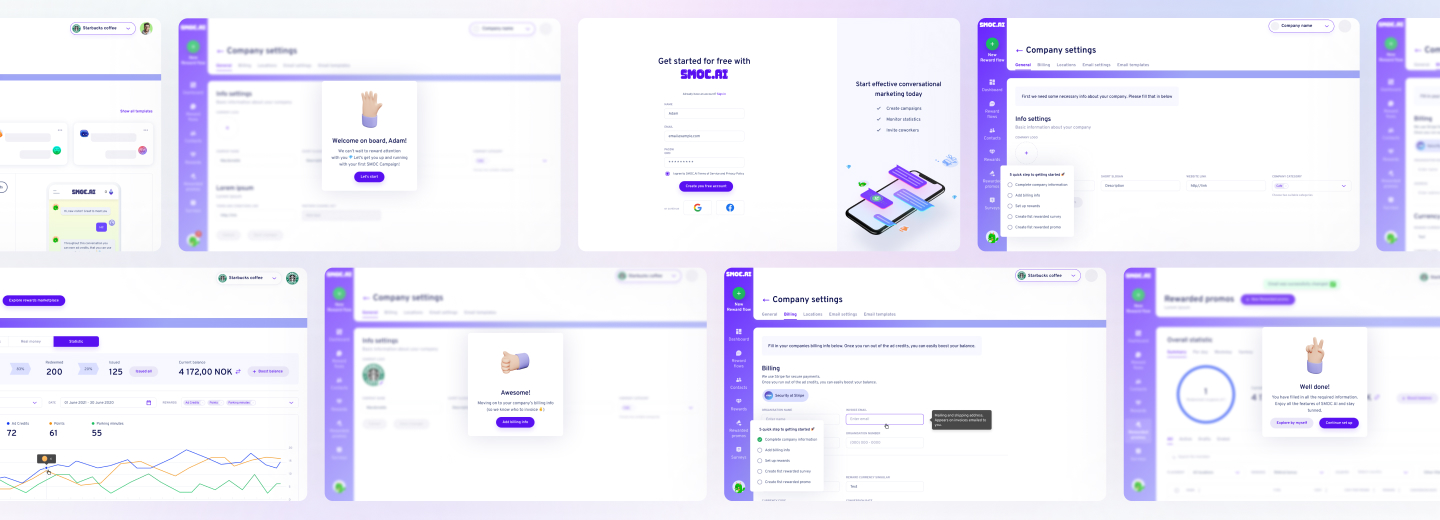Startup founders often find themselves focused on their product vision, pouring countless hours and resources into building what they believe the market wants. This passionate dedication can create a dangerous blind spot: neglecting the invaluable insights of the very people they’re trying to serve – their users. In the early stages of a business, when resources are scarce and pivots are still possible, user feedback is a must-have for a starting company. Customer feedback enables startups to align their offerings with genuine market needs. By weaving customer insights into the fabric of development, they can proactively outline market opportunities.
This article delves into the critical importance of actively soliciting and incorporating user feedback during the formative stages of a startup. We’ll explore why it’s so essential to prioritize this often-overlooked aspect of business development, examining the specific benefits it offers, from refining product features and improving customer satisfaction to validating business models and attracting investment. So find from our experience below what role customer feedback plays in shaping the destiny of a startup.
what’s in the article
- Why Customer Feedback Matters
- When Feedback Plays a Key Role for a Startup?
- How to Analyze Customer Feedback Effectively
- Methods of Collecting Customer Feedback
- Testing New Features Based on Feedback
- Overcoming Common Feedback Challenges
- Future Trends in Customer Feedback for Startups
- Conclusion
Why Customer Feedback Matters
Customer startup feedback provides invaluable insights into user experiences and expectations. When managed effectively, feedback shows the areas that resonate with your audience, allowing innovation. Gathering this information helps entrepreneurs align their offerings with market demands, ultimately capturing satisfaction and loyalty.
Best Way to Improve Product
Listening to customers’ feedback is more than just searching for critique to unlock insights. Diving into pain points with curiosity can transform the processes in the company or the entire product design. Strategic feedback integration uses data to anticipate trends and adapt swiftly in the market. Through this proactive approach, startups build resilience against competitors and inspire genuine customer loyalty.
Building a Customer-Centric Culture
Companies excelling in customer focus outperform others by an astounding margin. This approach realigns a startup’s operations to deliver a spectrum of exceptional experiences, ensuring customer voices are valued and applied. In creating this culture from the ground up, leaders must empower employees to prioritize the 3 C’s: Curiosity, Creativity, and Customer-centricity, which with proper strategies can enhance customer satisfaction.
Balancing Feedback with Vision
In the dynamic realm of startup development, balancing feedback with vision is the key to building a reliable product. While feedback offers valuable insights into customer needs and expectations, vision ensures the company stays true to its core mission. Striking this balance allows interpreting valuable customer data to refine and evolve objectives, strategies and processes.
When Feedback Plays a Key Role for a Startup?
The agility inherent in startups allows for rapid adaptation and course-correction, making it perfect for feedback-driven evolution. Furthermore, listening to this feedback can enhance customer relationships, turning users into advocates. Early adopters, eager to see the success of their chosen solutions, often provide insights that are invaluable to the refining process. Engaging with feedback early on in the critical growth phases of a startup enhances problem-solving efforts, ensuring a focused approach to customer satisfaction.

Looking to Build an MVP without worries about strategy planning?
EVNE Developers is a dedicated software development team with a product mindset.
We’ll be happy to help you turn your idea into life and successfully monetize it.
How to Analyze Customer Feedback Effectively
The importance of feedback in business brings numerous techniques and strategies. Analyzing customer feedback effectively requires employing structured methods such as sentiment analysis, qualitative coding, and quantitative surveys. It empowers startups to transform raw data into strategic insights that propel growth while enhancing customer satisfaction.
Categorize Feedback
Navigating through numerous layers of startup customers feedback requires a structured approach to ensure clarity and focus. Discerning categorization can transform chaotic feedback into coherent, valuable narratives. It requires systematic classification that greatly enhances understanding and provides the vision for effective implementation.
Thus, it’s not enough to gather feedback; you need to impose a framework that divides the collective data into actionable segments. These segments comprise positive, negative, and neutral feedback, each guiding different strategic directions. For instance, positive feedback validates successes and identifies what resonates, while negative feedback unearths areas requiring improvement and innovation. Neutral insights often reveal emerging opportunities and future trends.
Customer Journey Mapping
Customer journey mapping is a transformative exercise that captures, visualizes, and refines every touchpoint of the customer’s interaction with a startup. This methodology shows the nuances in experiences customers undergo which helps to take optimal strategic actions. Customer journey mapping reveals customer insights, structured through chronologically aligned interactions and emotions.
Using these maps to incorporate customer feedback enhances startup development by unveiling detailed insights into customer motivations, and identifying gaps and opportunities. This guides startups to implement targeted strategies that evolve together with customers.
Quantify Feedback
With quantifying customer feedback, startups get systematically scoped metrics and a vast amount of dynamic user experiences. Metrics, including response rates and engagement scores, show hidden patterns and areas necessitating improvement. These metrics set the foundation for innovative solutions that align with market needs while maintaining an agile growth trajectory.

Proving the Concept for FinTech Startup with a Smart Algorithm for Detecting Subscriptions

Scaling from Prototype into a User-Friendly and Conversational Marketing Platform
Methods of Collecting Customer Feedback
Utilizing diverse feedback methods, a startup can capture comprehensive, valuable user insights. Techniques such as surveys, in-app messaging, focus groups, customer interviews, and social media listening provide a multifaceted view of customer experiences, crucial for informed decision-making.
Online Polls
Online polls serve as a powerful resource in the realm of customer feedback collection. Their convenience and efficacy make them indispensable for startups aiming to tailor strategies. These polls allow startups to gather immediate, actionable insights from potential users with a real-time adaptation and deep understanding of customer desires. As users participate, responses can be “voted” on to collectively prioritize the next steps and build the robust roadmap of future updates. This method keeps feedback efforts vibrant, adaptable, and strategically aligned.
Provide a Beta Test
Launching a beta test is an invaluable stage in startup development, offering real-world insights prior to full-scale deployment of the product. This process begins with identifying target users and carefully selecting a representative group that exemplifies them. These users are then encouraged to provide honest and comprehensive feedback on their experience, offering invaluable first-hand perspectives. The next crucial step involves thoroughly analyzing this feedback to pinpoint areas of improvement and validate initial assumptions. The insights gained from this analysis are used to iterate and improve the product or service before the official launch.
User Interviews and Focus Groups
These methodologies create invaluable opportunities to delve deep into user experiences through the ability to correct the interview flow on the go and dive deeper into any revealed pain points. In facilitating a space where participants can freely articulate their thoughts, startup customer service gains access to a great amount of qualitative data. These dialogues not only reveal pain points but also unforeseen synergies in product utilization. Employing skilled moderators ensures a profound understanding of feedback, allowing startups to translate these insights into successful data-driven strategies.
Social Media Monitoring
Harnessing social media monitoring ensures enterprises remain deeply attuned to the preferences and thoughts of their audience. Each startup review can be used for this task. Numerous social media platforms host authentic discussions that startups can harness for rich, unfiltered customer insights. It is important to outline those where your target audience is. Through diligent observation, startups can decode patterns reflecting consumer behaviour and aspirations. This engagement can enhance the product from a technical perspective and improve customer loyalty and brand advocacy.
Testing New Features Based on Feedback
Startups can get numerous benefits when they test new features guided by customer insights. They revolutionize the platform’s user experience by heeding user feedback, which identifies gaps in current functionalities and areas for new enhancements. Testing new features in the real market setting allows bringing the product as close as possible to customer expectations. It allows for immediate fine-tuning, enhancing user satisfaction and reducing time to market, thereby achieving extraordinary operational efficiencies. Nevertheless, it is always important to remember about initial mission and goals of the solution as well and not to lose oneself in the process.

Need Checking What Your Product Market is Able to Offer?
EVNE Developers is a dedicated software development team with a product mindset.
We’ll be happy to help you turn your idea into life and successfully monetize it.
Overcoming Common Feedback Challenges
Navigating the multifaceted landscape of customer feedback, startups often encounter a myriad of challenges.
Distinguishing valuable feedback from noise requires adept prioritization skills. Naturally, entrepreneurs must discern which feedback aligns with their vision, creating a quality feedback framework (QFF) for execution.
Feedback often comes in disparate forms, making it crucial to establish centralized systems that categorize and analyze feedback efficiently. Here’s where investing in sophisticated data analytics tools becomes rather important, enabling startups to synthesize vast amounts of feedback into actionable insights quickly and effectively.
From the business prospective, the goal is to not only listen but also implement feedback meaning. Aligning organizational processes with a customer-centric focus ensures that feedback propels the startup toward sustained innovation.
Future Trends in Customer Feedback for Startups
The use of automated systems, powered by artificial intelligence, will revolutionize startup users feedback mechanisms. These systems will enable startups to gather real-time insights across digital touchpoints, thus capturing nuanced consumer sentiments. Moreover, it’s not just about data—it’s about creating a culture of responsiveness where startups anticipate customer needs and innovate preemptively, using predictive analytics to suggest future product enhancements. With 3D, immersive and rich interactive interfaces, users can engage providing comprehensive feedback experiences, thereby enhancing product refinement.
Conclusion
In conclusion, customer feedback is the important background of startup product development. Every successful startup utilizes user feedback management to guide critical decisions based on real-world data. This aligns initiatives purposefully with user expectations and product goals and mission.
Startups that prioritize collecting and analyzing customer input intelligently transform customer requirements and market problems into solutions. The strategic integration of feedback collection systems ensures startups stay agile in their market and evolve. Listening to consumers can translate extraordinary insights into unparalleled success, driving innovation that resonates.
The time it takes to identify products depends on the type of project, but it typically takes from a few weeks to several months. The aim is to gather enough information and insights without delaying development unnecessarily.
Primary target groups involve product owners, designers, developers, and user experience researchers. Functional team elimination ensures diverse viewpoints and a well-rounded approach for a comprehensive discovery process.
Yes, the product discovery can be handed over to other competent agencies or consultants in the market. However, it’s important to remain in contact with your internal team to make sure that the whole project meets your business and user objectives.

About author
Roman Bondarenko is the CEO of EVNE Developers. He is an expert in software development and technological entrepreneurship and has 10+years of experience in digital transformation consulting in Healthcare, FinTech, Supply Chain and Logistics.
Author | CEO EVNE Developers


















